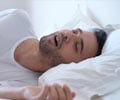
‘New method allows to simultaneously measure neural activity of both direct and indirect pathways in a mouse as the animal performs tasks.’
Tweet it Now
The scientists plan to use the technique to better understand what goes wrong in neurological disorders, such as Parkinson's
disease (PD). The study is published in the journal Neuron. According to Guohong Cui, M.D., Ph.D., head of the In Vivo Neurobiology Group at the National Institute of Environmental Health Sciences (NIEHS), part of NIH, the project began because he wanted to find out why patients with PD have problems with movement. Typically, PD motor symptoms include tremor, muscle stiffness, slowness of movement, and impaired balance.
Cui explained that an animal's ability to move was controlled by two groups of neurons in the brain called the direct pathway (D1) and indirect pathway (D2). Based on clinical studies of patients with PD and primate models, some researchers hypothesized that the loss of the neurotransmitter dopamine in the midbrain resulted in an imbalance of neural activities between D1 and D2. Since previous methods could not effectively distinguish different cell types in the brain, the hypothesis remained under debate. However, using SRFP, Cui's team was able to label D1 and D2 neurons with green and red fluorescent sensors to report their neural activity.
"Our method allowed us to simultaneously measure neural activity of both pathways in a mouse as the animal performed tasks," Cui said. "In the future, we could potentially use SRFP to measure the activity of several cell populations utilizing various colors and sensors."
With SRFP, Cui and colleagues found that when neural activity in D1 neurons is stronger than D2 neurons, the animal does a start and go, which means it starts and moves to another location. But, when the activity of D2 neurons is stronger than D1 neurons, the mouse does a start and stop, meaning it initiates a movement, but stops immediately.
Advertisement
Two of Cui's team members, NIEHS Visiting Fellows Chengbo Meng, Ph.D., and Jingheng Zhou, Ph.D., share first-authorship of the Neuron article.
Advertisement
While Cui's group is mainly interested in understanding PD, Zhou said SRFP will help researchers studying other brain conditions, such as Alzheimer's disease, stroke, multiple sclerosis, and addiction.
Source-Eurekalert















